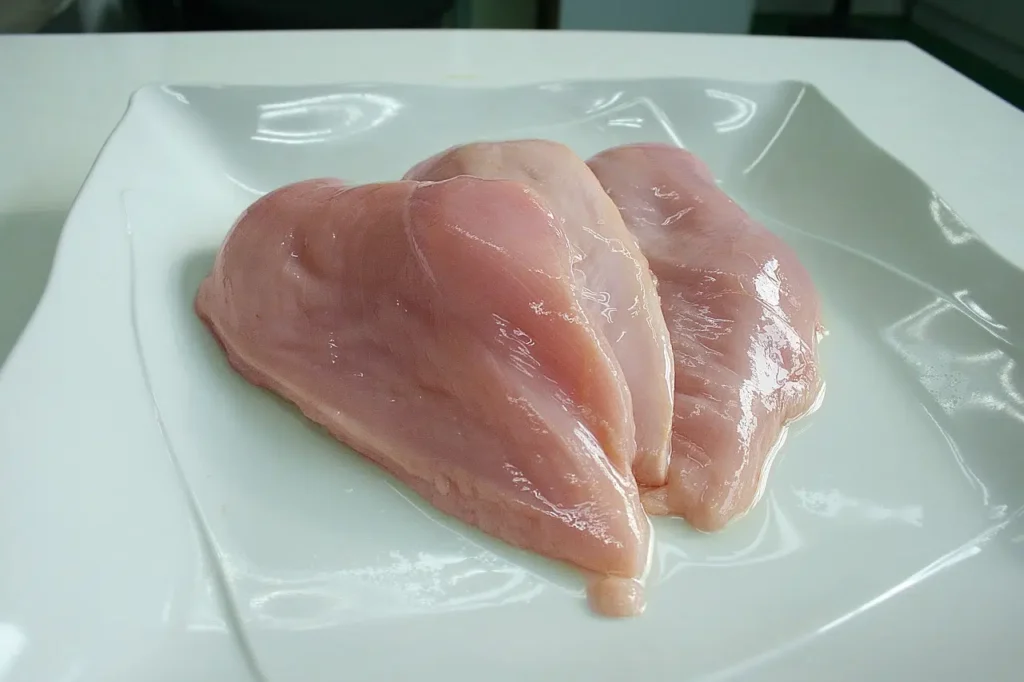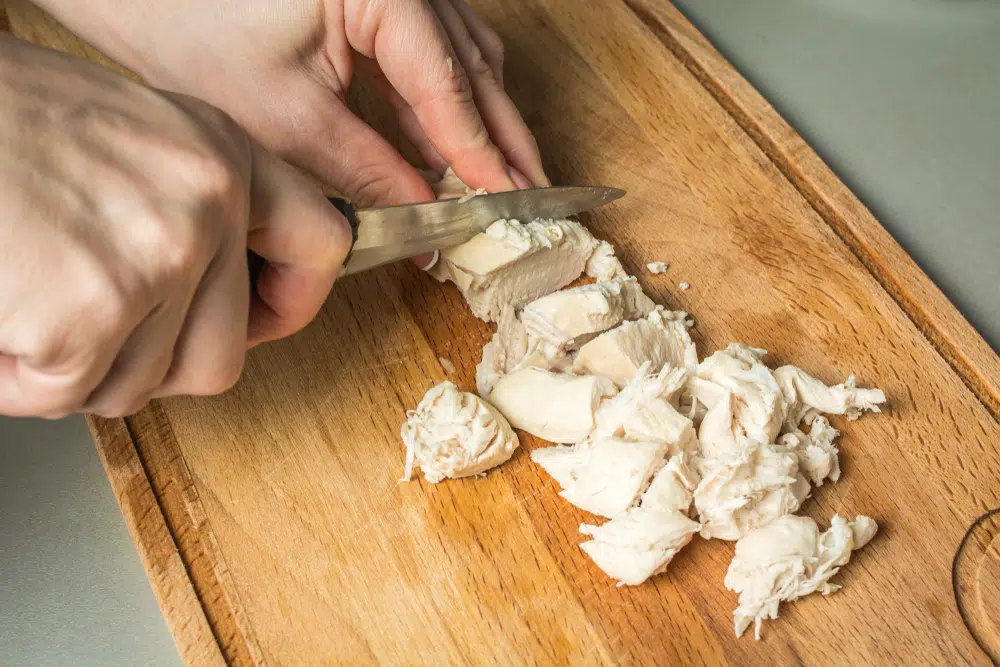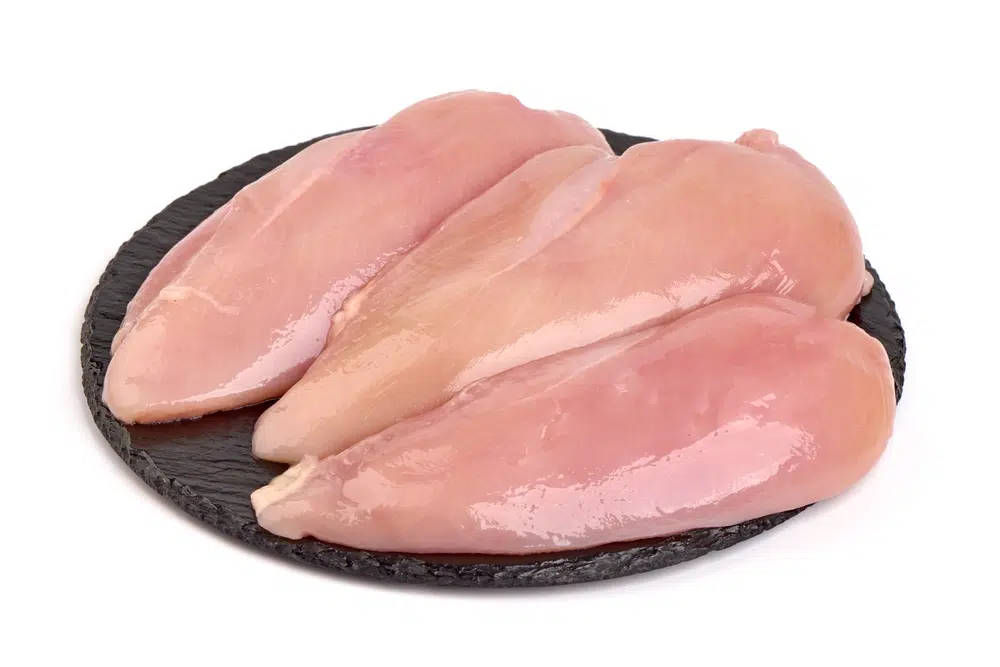Feeding dogs a raw diet is often promoted as an excellent nutritional choice, with claims that raw meat aligns with the natural ancestral diet of dogs. As a result, many raw dog food companies include raw chicken breast in their formulas. While dogs can eat raw chicken breast, it’s best offered as part of a commercially prepared raw diet or a homemade meal plan guided by a veterinary nutritionist.
Although raw chicken breast itself isn’t inherently harmful to dogs, it carries risks of bacterial contamination, which may lead to foodborne illnesses. Before adding raw chicken breast to your dog’s diet, understanding its benefits, risks, and safe handling practices is crucial.

Can Dogs Eat Raw Chicken Breast?
Chicken breast is a nutrient-rich ingredient commonly found in dog foods and recipes. It’s an excellent source of protein and provides essential nutrients like vitamin B3, vitamin B6, and zinc.
Proponents of raw diets often cite benefits such as improved skin/coat health, cleaner teeth, and a stronger immune system. Some argue that raw food better mimics the natural diet of wild canines. However, many of these claims lack robust scientific backing. While small studies suggest potential links between raw meat and health benefits, more research is needed to confirm whether raw diets are superior to cooked alternatives.

Risks of Feeding Raw Chicken Breast to Dogs
Feeding raw chicken breast carries significant risks, and many experts caution against it. The primary concern is public health safety:
- Bacterial Contamination: Raw chicken may harbor harmful bacteria like Salmonella and E. coli. While healthy dogs rarely fall ill from these pathogens, they can shed bacteria in their feces, posing risks to humans—especially immunocompromised individuals, children, pregnant women, and the elderly.
- Foodborne Illness in Dogs: Though uncommon, dogs may experience symptoms like vomiting, bloody diarrhea, fever, or lethargy. Severe cases can lead to dehydration, sepsis, or even death if untreated.
- Cross-Contamination: Surfaces, bowls, and utensils exposed to raw chicken require thorough cleaning and disinfection to prevent bacterial spread.
Are There Benefits to Feeding Raw Chicken Breast?
Compared to cooked chicken, raw chicken breast has a few advantages:
- Nutrient Preservation: Cooking can degrade nutrients like vitamins and amino acids. Raw diets may retain more nutritional value.
- Ease of Balancing Homemade Meals: Raw diets can simplify creating balanced recipes, as cooking alters nutritional profiles unpredictably.
- Palatability: Some dogs prefer raw meat and may reject cooked alternatives.
However, these benefits are situational. Most dogs thrive on cooked diets, and homemade cooked recipes can still meet nutritional needs with proper planning.

How to Safely Feed Raw Chicken Breast to Dogs
- Consult Your Veterinarian: Discuss your dog’s health, age, and dietary needs before transitioning to raw food.
- Choose Commercial Raw Diets: Opt for reputable brands that follow safety standards for handling and nutrient balance.
- Work with a Veterinary Nutritionist: For homemade diets, a professional can create a tailored plan to avoid deficiencies.

Conclusion
Raw chicken breast isn’t inherently toxic to dogs, but its inclusion in their diet requires caution. The primary risks involve public health concerns and potential bacterial exposure. While some dogs enjoy raw chicken, consult your veterinarian before making dietary changes. Partnering with a veterinary nutritionist ensures your dog’s meals are safe, balanced, and nutritionally complete.
See Also:



Pingback: How to Cook Chicken for Dogs: Simple Step-by-Step Guide - Happy Paws Spot